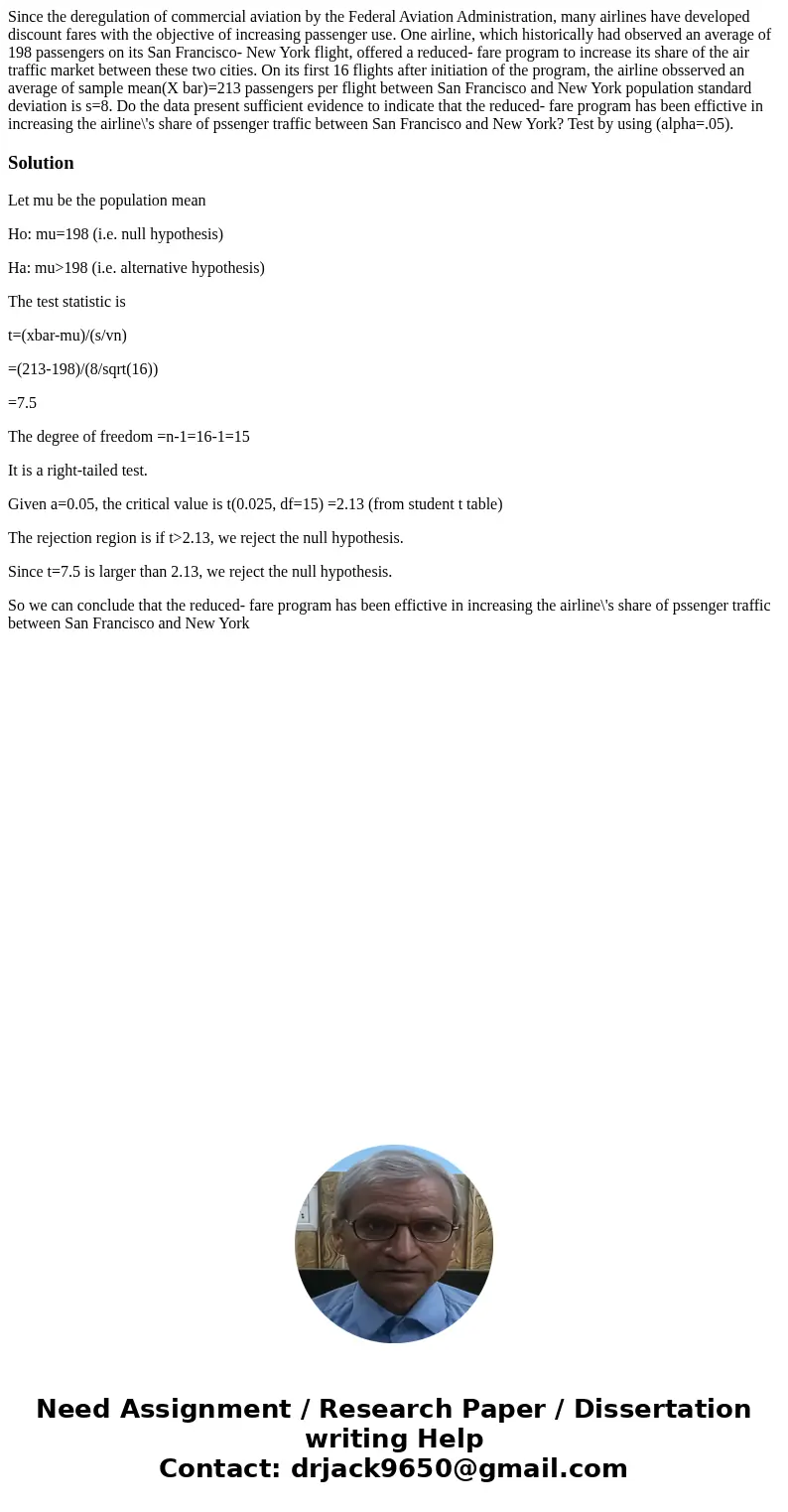Since the deregulation of commercial aviation by the Federal
Since the deregulation of commercial aviation by the Federal Aviation Administration, many airlines have developed discount fares with the objective of increasing passenger use. One airline, which historically had observed an average of 198 passengers on its San Francisco- New York flight, offered a reduced- fare program to increase its share of the air traffic market between these two cities. On its first 16 flights after initiation of the program, the airline obsserved an average of sample mean(X bar)=213 passengers per flight between San Francisco and New York population standard deviation is s=8. Do the data present sufficient evidence to indicate that the reduced- fare program has been effictive in increasing the airline\'s share of pssenger traffic between San Francisco and New York? Test by using (alpha=.05).
Solution
Let mu be the population mean
Ho: mu=198 (i.e. null hypothesis)
Ha: mu>198 (i.e. alternative hypothesis)
The test statistic is
t=(xbar-mu)/(s/vn)
=(213-198)/(8/sqrt(16))
=7.5
The degree of freedom =n-1=16-1=15
It is a right-tailed test.
Given a=0.05, the critical value is t(0.025, df=15) =2.13 (from student t table)
The rejection region is if t>2.13, we reject the null hypothesis.
Since t=7.5 is larger than 2.13, we reject the null hypothesis.
So we can conclude that the reduced- fare program has been effictive in increasing the airline\'s share of pssenger traffic between San Francisco and New York

 Homework Sourse
Homework Sourse